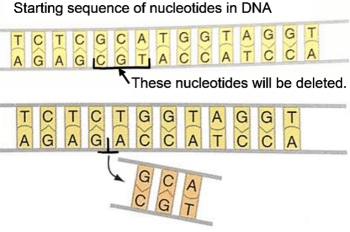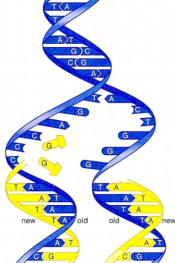Serendip is an independent site partnering with faculty at multiple colleges and universities around the world. Happy exploring!

Thoughts about "The He Hormone"
Like venn diagram, my interest was immediately captured by Andrew Sullivan’s “The He Hormone.” I appreciated the information on hormonal differences between males and females, but was frustrated at times by the ways Sullivan used these biological differences to explain differences in the social roles men and women take on. I understand that testosterone levels have an impact on many elements of our personality and behavior, such as an individual’s self-confidence and energy levels. However, using differences in testosterone levels to explain the fact that more men are in politics or powerful business positions than women do, negates the fact that important social factors are also at play.
The Education Bubble--Harvard Business Review
Hey Everyone!
This link is just food for thought, but it points out something I think pertains to the article by Edmundson we read earlier in the semester. Justin Fox, a Harvard Business School professor, talks about the value of a college degree and how the supply of college graduates is much greater than the demand, which ultimately allows for a really horrible job market in the United States. He talks about how the cost of a degree is far more expensive than its worth in most cases today, and the possibility that this will create an education bubble that will eventually burst.
I think this can really help explain Edmundson's point about the mentality of college students today who feel tremendous pressure to perform to perfection rather than taking risks.
-"The Education Bubble, Tenure Envy, and Tuition"
Harvard Business Review
http://blogs.hbr.org/ideacast/2011/06/the-education-bubble-tenure-en.html
Reflections!
My reflection revolved around my ability to "edit" my ideas and rethink many opinions about our educational system that I once firmly believed in. Prior to being in this class, I had a strong belief that every student should go to college and those who didn't were destined to be failures. Even though I saw students who simply weren't raised to beleive college was even a remote possibility, I felt comfortable telling myself that these students simply weren't ambitious or motivated enough to reach college. Essentially, I was blaming these students for something that, in many aspects, was out of their control. Since being in this seminar, my views on the topic have changed tremendously; and I realize the adversity that disadvantaged students have in our educational system that promotes "fairness." My ability to really grapple with issues like these has been the area where I've seen the most growth in myself over the course of this seminar.
Reflection so far...
My perceptions and beliefs about education have definitely been challenged and expanded through the progression of this class. I’ve learned that everyone in my class has had different educational backgrounds than myself, but we all have something in common and things to share with the class. I’m not quite sure what we have in common but I know that it’s something because the way in which we have our conversations, you would think that we have all shared some of the same educational experiences.
It’s nice to be apart of a class where I am not judged for what I have to say. I think that collectively as a class we have so many opinions to offer. I really like that we work really hard to challenge ourselves and work to understand (to the best of our ability) complicated readings—knowing and hearing the ideas of others helps me rethink what I have to say.

Disability and Sexuality
http://www.msmagazine.com/blog/blog/2011/10/11/thoughts-on-slutwalk-from-a-wheelchair/
I came across this article which I gives another lived experience of what it is like to be wheelchair-bound. The picture of the lady holding a sign that says "disabled women are not sexless! We want sex and relationships - not rape." is particularly powerful and I think drives home the idea of people with disabilities being sexless.

 The attached files have the overview of key concepts, with descriptions of relevant learning activities and links to the activities.
The attached files have the overview of key concepts, with descriptions of relevant learning activities and links to the activities. 


